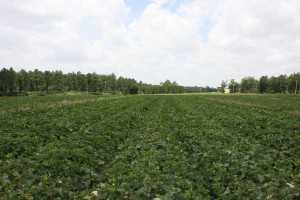FDA Officer Reviews Deadly Salmonella Outbreak And Offers Food Safety Pointers
Sifting through the timeline of press coverage from the Chamberlain Farms’ Salmonella outbreak, which occurred in late August 2012, is quite the task. The outbreak, which was traced back to the farm in Owensville, IN, sickened 260 and killed three across 24 states. Media coverage of the case began that August and pressed onward in the coming months with updates on lawsuits, information leaked from the farm’s trucking company, and countless theories as to what may have happened.
After seven months of thorough investigation, FDA released its reports on the case in March 2013, and included a detailed hypothesis of how they believed the cantaloupes may have initially been infected.

Helping preside over the investigation was FDA Food Safety Officer Michael Mahovic, who presented some of the FDA’s findings in detail at the Great Lakes Fruit, Vegetable, and Farm Market Expo in Grand Rapids, MI, in December 2013.
Here is the timeline of details Mahovic presented, as well as recommendations for growers to avoid these same deadly and costly mistakes.
Stage 1: Samples were collected from whole melons from the packing line; swabs were taken on the line, on the floors, in all surrounding areas, and on all of the equipment. A positive swab was found that matched the outbreak strain, and six of 70 samples collected from the packinghouse were positive.
Mahovic mentioned that the overall packinghouse design was faulty and FDA noticed wet packing and handling machines, old wood, and shag carpeting beneath the packing line.
Stage 2: FDA conducted an environmental assessment, going into the field to pinpoint the exact source of contamination. “At this point we knew we had the problem, but we needed to figure out where [the Salmonella] was, how it got there, how it transferred, and how it survived,” Mahovic shared.
FDA took samples from the cantaloupe and watermelon fields including soil, wild animal excreta, well water, pooling water on field perimeters, and drainage ditch water. They detected Salmonella in four parcels of land, three of which contained non-outbreak strands of Salmonella, and one of which contained the outbreak strand. Furthermore, all of the wells they tested contained E. coli.
According to Mahovic, a nearby ditch that animals were able to enter was another possible source of contamination. The ditch tested positive for Salmonella, and the water from the ditch discharged into a river northwest of the property.
Packing Problems
During the packinghouse inspection, Mahovic stated that the officers noted an abundance of poor design elements that may have contributed to the contamination including:
- Pooling water on the floor that may have splashed up onto the adjacent equipment.
- The floor was made from porous material and not amenable to cleaning, and there was shag carpeting.
- The wood on the line, the tools, and other packing equipment were also made from porous materials and likely to have retained microbial matter. Mahovic said this material should have been coated with paint or plastic to enable cleaning.
- The drip line of the packinghouse roof extended over the conveyor belt and brush washer, and water could drip down onto the line.
- Birds were sitting on the rafters which were located directly above the conveyor belt.
- When FDA assessed the packing and holding processes, they noted the
following: - There was no pre-cooling before storing and shipping.
- Cantaloupes were packed while still moist from washing, which provided the perfect environment for pathogens.
Mahovic notes that the general cleaning and sanitizing practices were also faulty, and no records of any sanitary procedures were maintained.
Food Safety Tips
Wrapping up, Mahovic offers several recommendations to growers on how to reduce the chances of a Salmonella outbreak on the farm including:
1: Be sure to follow GAPs, and to assess the packinghouse design so that every surface, tool, and piece of equipment is cleanable.
2: Sanitize water using water disinfectants, and monitor microbial levels in water to prevent the risk of cross-contamination.
3: Implement melon handling operations that minimize the incidence of melon surface moisture to reduce potential plant and human pathogen introduction.
4: Develop and maintain written food safety plans and standard operation procedures for areas such as handling and storage practices, field, facility, and vehicle cleaning and sanitation.
5: Maintain records for significant activities performed, such as monitoring of water sources and use; testing water quality; treating water; cleaning and sanitation of equipment, and other tasks.
For more information on food safety guidelines for cantaloupe producers, go to www.cantaloupe-guidance.com or visit the Eastern Cantaloupe Growers Association’s website www.ecga-usa.org.









